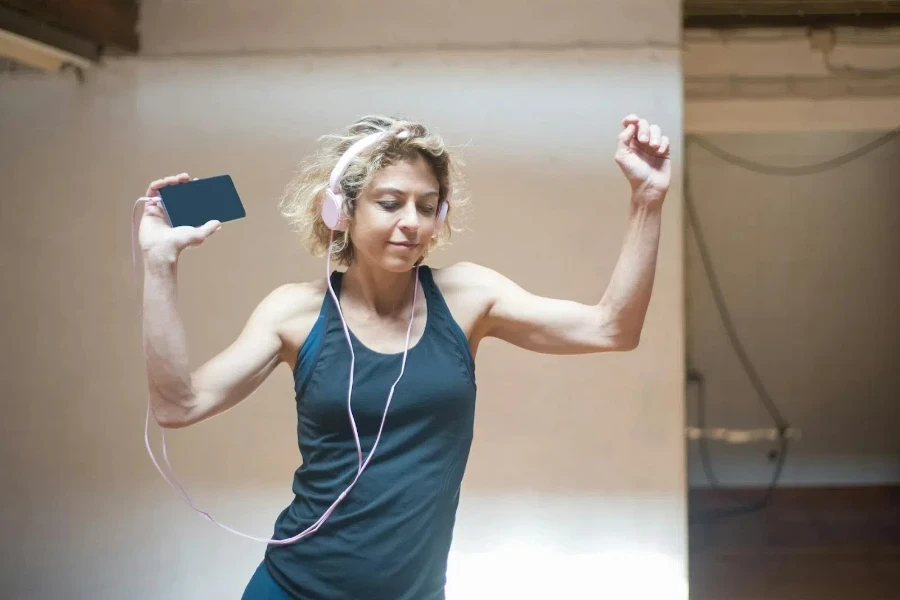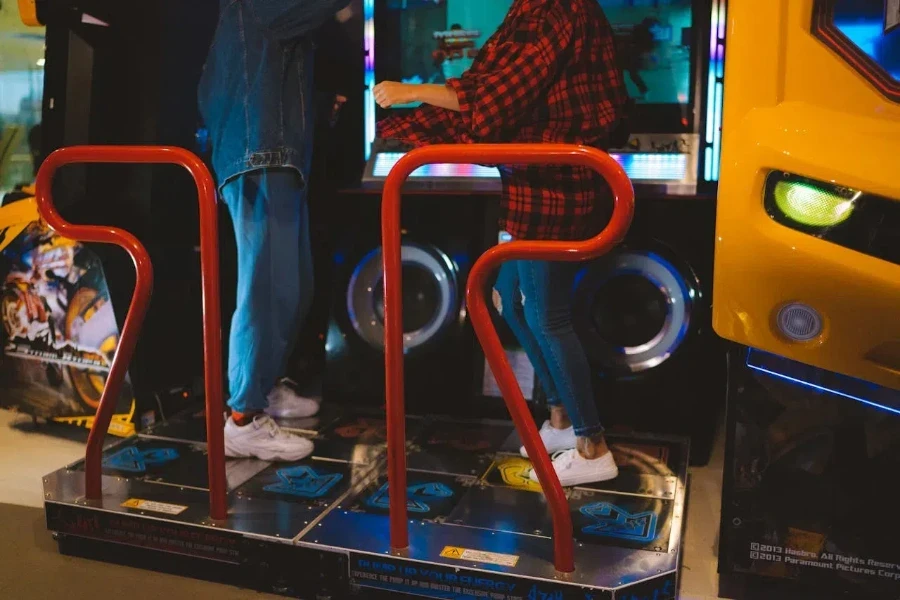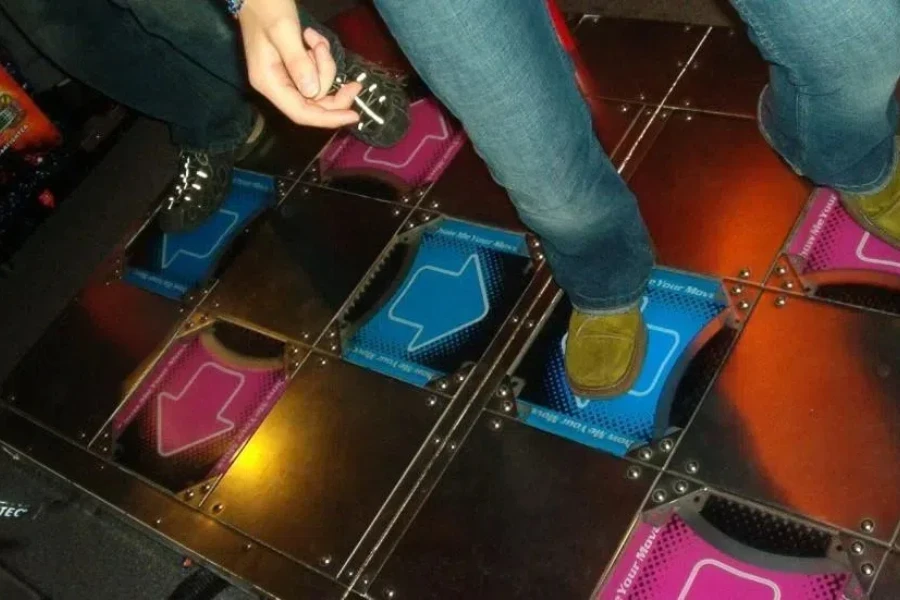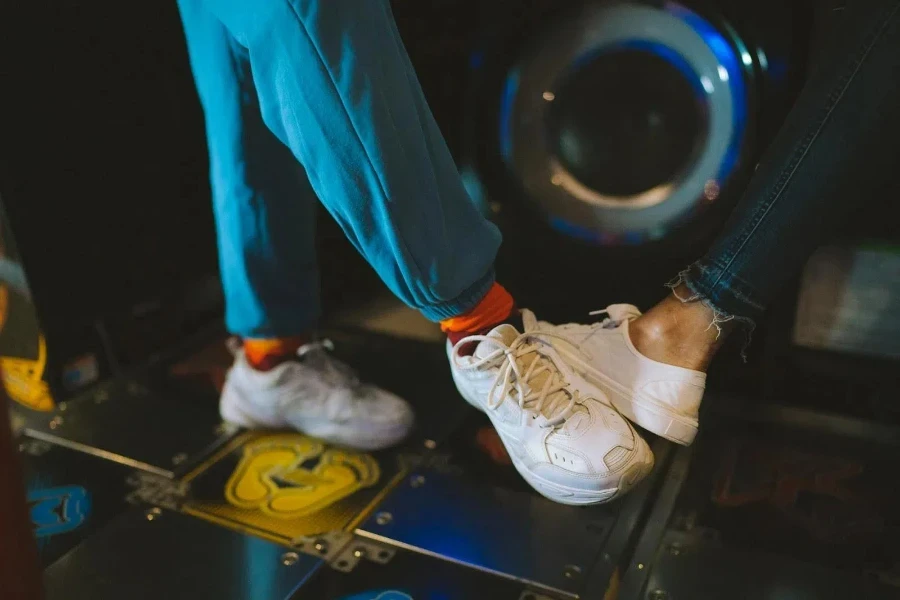In 2025, dance pads will be more than just a gaming accessory. They will become one of the best ways for consumers to exercise while having fun. Thanks to innovations in fitness and tech, consumers can enjoy a whole new experience with modern dance pads.
This article explores three cutting-edge dance pad trends that will dominate the market next year. Businesses will also find a short guide on choosing dance pads and three strategies to help market them for success in 2025.
Table of Contents
A brief look at the dance pad market
Dance pads: 3 trends that will change the industry in 2025
4 factors to consider when stocking dance pads
3 marketing angles businesses can use to offer their dance pads
Wrapping up
A brief look at the dance pad market

Experts say the dance pad market will register a 6.7% annual growth rate from 2024 to 2031. The market is growing steadily because of quick AI adoption, machine learning, and big data analytics. Reports also suggest that most of the growth will happen in North America, with the United States and Canada taking dominant positions.
Additionally, dance pads have registered some growth search-wise. According to Google data, they attracted an average of 6,600 searches in 2023, which grew by 10% to 8,100 on average throughout the second half of 2024. They also registered an additional 20% growth at the beginning of 2024’s third quarter, raking in 9,900 searches in August.
Dance pads: 3 trends that will change the industry in 2025
1. Technology integration

Dance pads are advancing with better technology, offering features that significantly improve the user’s experience. Modernized pads already have Bluetooth for a wireless session and uninterrupted coordination with other devices. Moreover, with advanced motion sensors, dance pads have much better precision, accurately registering every move.
But there’s more. VR interaction is another rising trend. Dance pads that include VR options will surely win the hearts of tech-savvy consumers because of their dynamic 3d environments. They will also love the more interactive and engaging experience.
With technology advancing every day, dance pads will be more sophisticated. They will seamlessly blend physical activity with digital innovation, setting new standards in the fitness and gaming market.
2. Customization options

Individuality is a significant trend across various industries, and the dance pad market is no exception. That’s why personalization is becoming pivotal in the dance pad market, driving manufacturers to offer numerous options for customers to personalize their gadgets.
Users may choose different patterns, designs, or colors to create a dance pad that fits their taste. Customization is a unique selling point that can prove quite attractive to many.
Additionally, customization options allow retailers to match different preferences and make more appealing offers to a larger group. Above all, focusing on personalization is a great way to set dance pads apart in a competitive market.
3. Health and fitness focus

Retailers may capitalize on the increasing interest in health and fitness by marketing dance pads as a fun exercise. This trend appeals to consumers seeking a more enjoyable substitute for regular exercise.
While it may not look like it, dancing is a great way to get an entire body workout, promoting cardiovascular strength, coordination, and endurance. Even better, dance pads present an excellent opportunity to expose engaging exercises to a broader audience, especially those who don’t exercise regularly.
4 factors to consider when stocking dance pads

1. Type
Dance pads are not one-size-fits-all products. They come in up to three types that appeal to different consumers, including soft, hard, and arcade dance pads.
Soft dance pads are portable, affordable, and low-impact, making them ideal for all ages, especially those with joint limitations. They fold easily for storage and are compatible with various fitness programs and dance games (like Dance Dance Revolution and Zumba Fitness), offering a convenient home workout without gym memberships.
On the other hand, hard and arcade dance pads are more durable, stable, and responsive. Their heavy designs make them perfect for experienced dancers and regular use. Additionally, hard dance pads offer precise movements, reduced injury risks, and configurations that mimic arcade experiences. For this reason, businesses can use hard dance pads in commercial settings or offer them to enthusiasts seeking advanced dance workouts.
2. Build quality
High-quality dance pads are essential for providing the stability and responsiveness consumers need for a satisfying experience. Flimsy pads won’t cut it, so retailers must stock durable models to handle regular use.
More importantly, dance pads come in different materials. Since soft pads are gentle on the user’s joints, they often feature softer rubber or Foam inserts and lightweight plastic or wood. In contrast, hard pads offer more responsiveness and come with stiffer materials, like metal, heavy-duty plastic, polycarbonate, or acrylic sheets.
3. Size

Offering dance pads in various sizes helps retailers cater to customers with different living spaces. Remember, everyone won’t have a larger dance space, so business buyers can offer various pads that fit in small apartments, dorms, or bedrooms—it’s a surefire way to reach a wider audience. They may also consider modular hard pad buttons that consumers can use according to their space.
4. User’s skill level
Don’t forget the consumer’s skill level. Retailers should offer dance pads that beginners and advanced users can use. For example, beginners (like kids) benefit from soft, simple pads that encourage continuous use, while advanced players need high-end, responsive panels to stay challenged. Offering options for casual and dedicated users is a great way to curate a well-rounded selection.
3 marketing angles businesses can use to offer their dance pads

Angle #1: Dance pads as fitness equipment
Shift the dance pad from a gaming accessory to an engaging fitness tool. Retailers can start by researching how many calories dance pad exercises can burn and using this as a unique selling point. Additionally, retailers can work with certified fitness trainers to design workout routines specifically for the product.
Marketing strategy
Business buyers can create engaging content that shows people of all fitness levels reaching their goals with dance pads. Then, they can share these stories on social media, including success stories and testimonials. Lastly, retailers should collaborate with fitness influencers to promote dance pad surfaces for different workout levels, like low-impact and high-impact exercises.
Angle #2: Dance pads for athletic training
Since dance pads are great fitness tools, retailers can also market them for athletic training. They should focus on contacting sports teams, academies, and individual athletes. Remember to offer discounts and special deals for sports teams with bulk purchases.
Angle #3: Dance pads for rehabilitation
Dance pads are so versatile that retailers can market them to rehabilitation programs. The targets here are hospitals, home healthcare providers, and rehabilitation centers. Highlight how dance pad rehabilitation is cost-effective and engaging for patients. Businesses can also provide training programs for healthcare professionals who include dance pads in their treatment plans.
Wrapping up
In 2025, the dance pad market will be revolutionized by technology, customization, and a growing focus on health and fitness. As these trends reshape the industry, businesses that adapt and innovate will thrive. Whether for gaming, fitness, or rehabilitation, dance pads are set to become a staple in the wellness and entertainment landscape.




